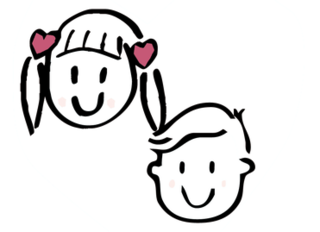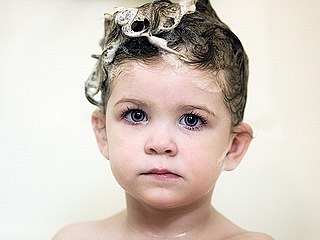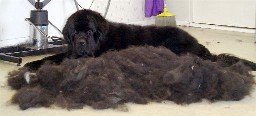
In mathematics and computer science, an algorithm is a finite sequence of well-defined instructions, typically used to solve a class of specific problems or to perform a computation. Algorithms are used as specifications for performing calculations and data processing. By making use of artificial intelligence, algorithms can perform automated deductions and use mathematical and logical tests to divert the code through various routes. Using human characteristics as descriptors of machines in metaphorical ways was already practiced by Alan Turing with terms such as "memory", "search" and "stimulus".

Shaving is the removal of hair, by using a razor or any other kind of bladed implement, to slice it down—to the level of the skin or otherwise. Shaving is most commonly practiced by men to remove their facial hair and by women to remove their leg and underarm hair. A man is called clean-shaven if he has had his beard entirely removed.

Washing is a method of cleaning, usually with water and soap or detergent. Washing and then rinsing both body and clothing is an essential part of good hygiene and health.

Hair coloring, or hair dyeing, is the practice of changing the hair color. The main reasons for this are cosmetic: to cover gray or white hair, to change to a color regarded as more fashionable or desirable, or to restore the original hair color after it has been discolored by hairdressing processes or sun bleaching.

Shaving cream or shave cream is a category of cream cosmetics used for shaving preparation. The purpose of shaving cream is to soften the hair by providing lubrication.

Ghusl is an Arabic term to the full-body ritual purification mandatory before the performance of various rituals and prayers, for any adult Muslim after having ejaculation or completion of the menstrual cycle.

Hair care is an overall term for hygiene and cosmetology involving the hair which grows from the human scalp, and to a lesser extent facial, pubic and other body hair. Hair care routines differ according to an individual's culture and the physical characteristics of one's hair. Hair may be colored, trimmed, shaved, plucked or otherwise removed with treatments such as waxing, sugaring and threading. Hair care services are offered in salons, barbershops and day spas, and products are available commercially for home use. Laser hair removal and electrolysis are also available, though these are provided by licensed professionals in medical offices or speciality spas.
Hair washing is the cosmetic act of keeping hair clean by washing it. To remove sebum from hair, some apply a surfactant, usually shampoo to their hair and lather the surfactant with water. The surfactant is rinsed out with water along with the dirt that it bonds to.

Locks of Love is a 501(c)(3) nonprofit charity that provides custom-made hair prosthetics to disadvantaged children up to the age of 21 who have suffered hair loss as a result of medical conditions, such as alopecia, burn trauma, and cancer treatment. They are provided to the children free of charge, and they may receive a new one every two years until they turn 21 years old. Locks of Love says that, despite rumors to the contrary, children and their families are never charged for the hair prosthetics they receive. Locks of Love accepts donations of human hair, and it also accepts financial donations.

A shaving brush or shave brush is a small brush with a handle parallel to the bristles used to make lather from shaving soap or shaving cream and apply it to the face when shaving. Shave brushes are often decorative; antique handles are often made from materials such as ivory or even gold, though the bristle load may be composed of any number of natural or synthetic materials. The shave brush is used most often today by "wet shavers" in tandem with a single- or double-edged safety razor or a straight razor. However, this is not always the case, as shavers of all varieties may employ the tool.
A Navy shower is a method of showering that allows for significant conservation of water and energy by turning off the flow of water in the middle portion of the shower while lathering. The total running time of this kind of shower can last less than two minutes – using an initial thirty seconds or so to get wet, followed by shutting off the water, using soap and shampoo and lathering, then rinsing for a minute or less.

"Breathe Again" is a song by American R&B singer Toni Braxton. It was written by Kenneth "Babyface" Edmonds and produced by Edmonds, L.A. Reid, and Daryl Simmons for Braxton's self-titled debut album (1993). Its lyrics evokes a sense of nostalgia from a relationship that has run its course. The ballad was released as the album's second single in 1993.

Senegalia rugata, commonly known in India as Shikakai, is a spiny climbing shrub native to China and tropical Asia, common in the warm plains of central and south India. It is renowned as a raw material for shampoo, and the leaves and young shoots are often eaten. Archaeobotanical evidence shows its use for hair care in the pre-Harrapan levels of Banawali, some 4500–4300 years ago.

Hair straightening is a hair styling technique used since the 1890s involving the flattening and straightening of hair in order to give it a smooth, streamlined, and sleek appearance. It became very popular during the 1950s among black males and females of all races. It is accomplished using a hair iron or hot comb, chemical relaxers, Japanese hair straightening, Brazilian hair straightening, or roller set/blowdryer styling. In addition, some shampoos, conditioners, and hair gels can help to make hair temporarily straight.

Shampoo is a hair care product, typically in the form of a viscous liquid, that is used for cleaning hair. Less commonly, shampoo is available in solid bar format. Shampoo is used by applying it to wet hair, massaging the product into the scalp, and then rinsing it out. Some users may follow a shampooing with the use of hair conditioner.

Dog grooming refers to both the hygienic care and cleaning of a dog, as well as a process by which a dog's physical appearance is enhanced for showing or other types of competition. A dog groomer is a person who earns their living grooming dogs.

Dry shampoo is a type of shampoo which reduces hair greasiness without the need for water. It is in powder form and is typically administered from an aerosol can. Dry shampoo is often based on corn starch or rice starch. In addition to cleansing hair, it can also be used as a tool for hair-styling as it can create volume, help tease hair, keep bobby pins in place, and be used in place of mousse in wet hair. Dry shampoo proponents attest that daily wash-and-rinse with detergent shampoo can strip away natural oils from hair. However, others attest that spraying dry shampoo every day will lead to a build-up of product that can dull hair color and irritate the scalp, arguing that the scalp needs regular cleansing and exfoliating to get rid of bacteria, remove dead skin cells, and stay healthy.
No poo is a collective term for methods of washing hair without commercial shampoo.

The Curly Girl Method is an approach to hair care designed by author Lorraine Massey for natural hair that has not been chemically relaxed. This method discourages the daily use of sulfate shampoo, as it is too harsh for curly hair. Among other things, it calls for the use of a cleansing conditioner in place of shampoo, no silicones, the use of a diffuser when blowdrying, and no combs, brushes, or terrycloth towels. It also includes tips for using hair gel and other styling products. The aim in general is to treat naturally curly hair gently, minimizing damage to the hair cuticle; to keep it moisturized, since curly hair is more prone to dryness than straight hair; and, perhaps most significantly, to accentuate rather than interfere with the hair's natural curl pattern.















